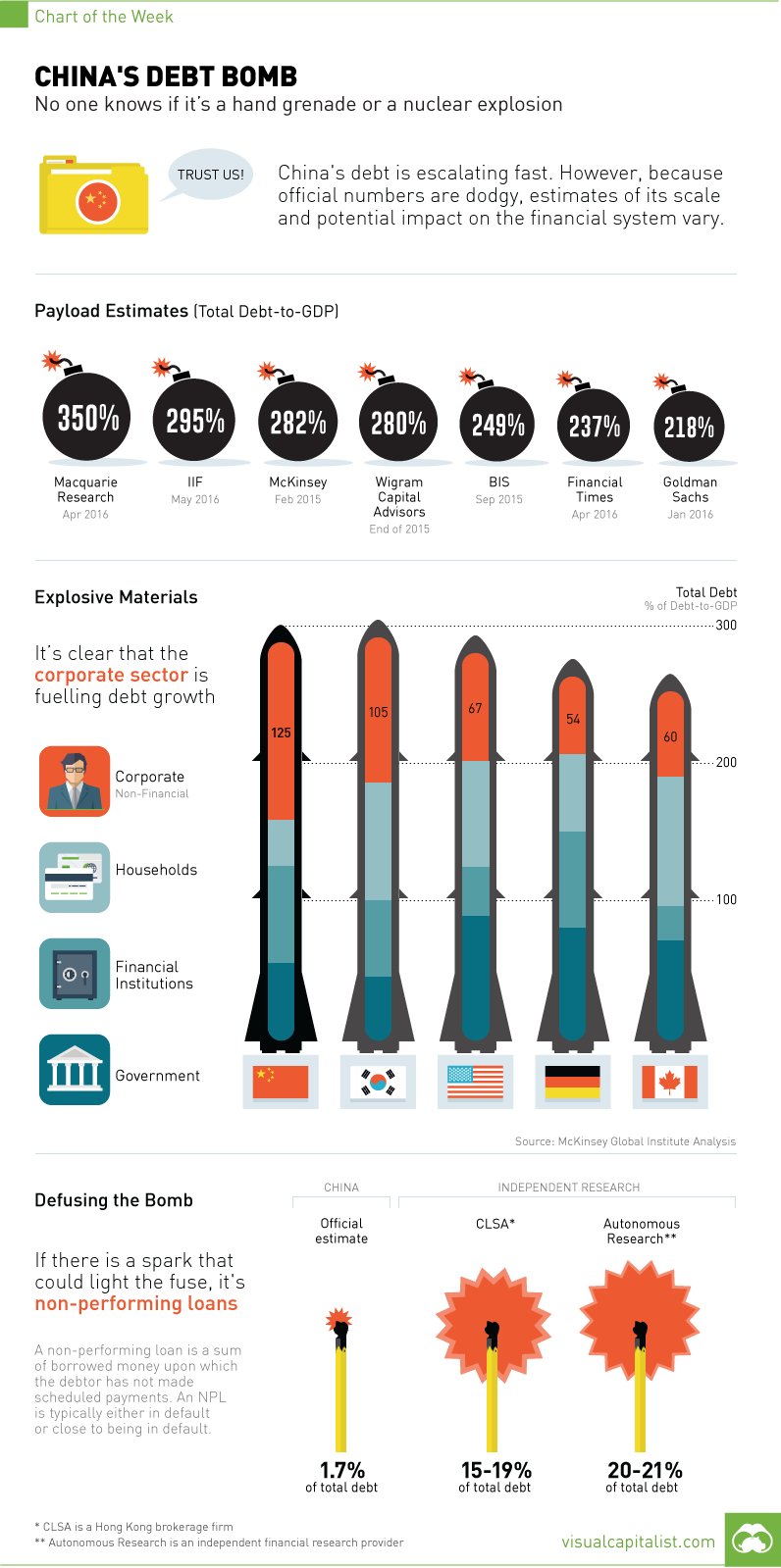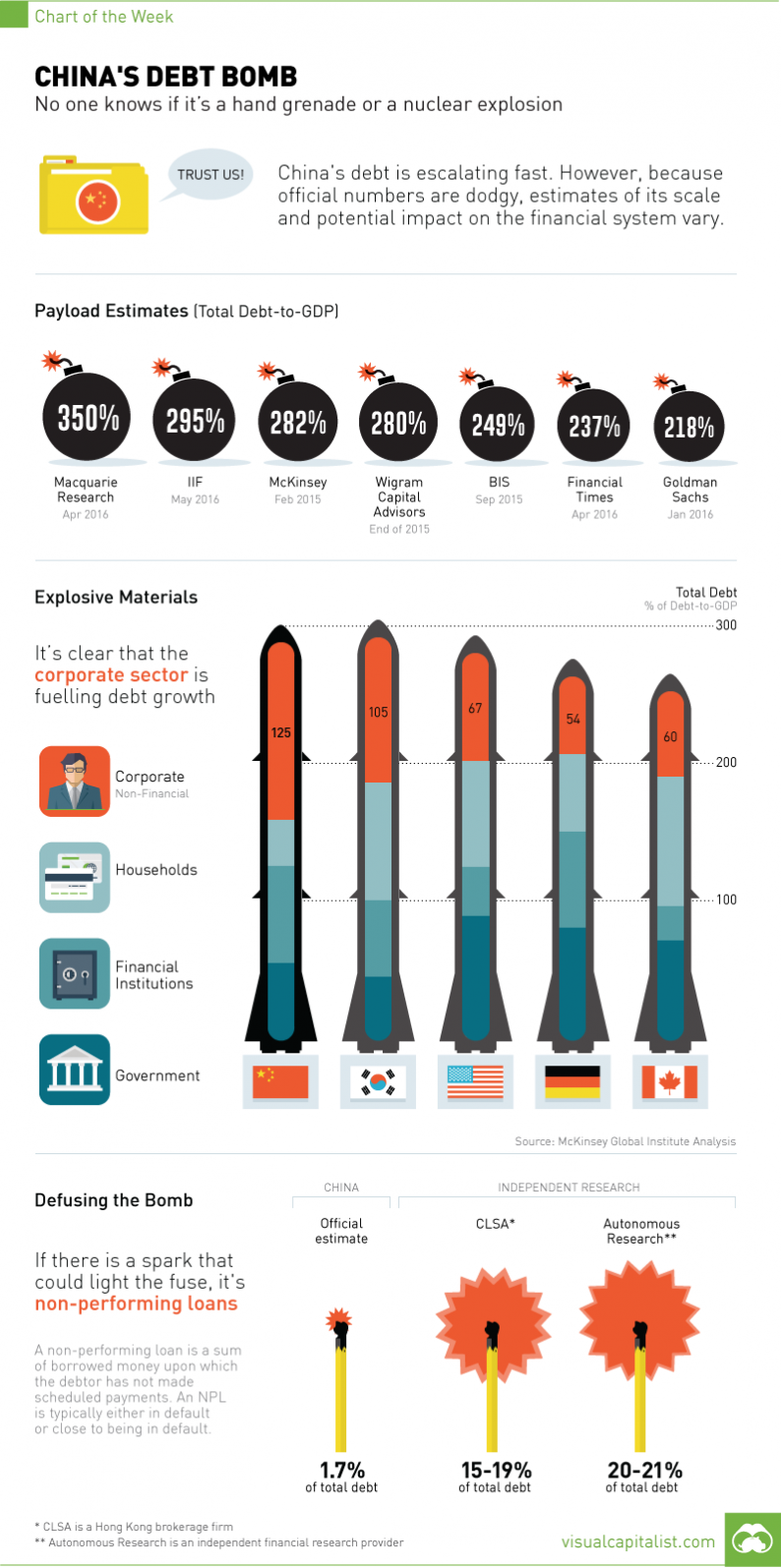No one knows if it’s a hand grenade or a nuclear warhead…
The ramp up in Chinese debt accumulation has been a leading concern of investors for years. The average total debt of emerging market economies is 175% of GDP, and skyrocketing corporate non-financial debt has launched China far beyond that number.
The real question is: by how far?
The answer is disconcerting, as VisualCapitalist’s Jeff Desjardins warns, because nobody really knows.
If the Chinese debt bomb is detonated, the impact on markets is anybody’s guess. Kyle Bass says the losses would be 5x that of the subprime mortgage crisis, while Moody’s says the bomb will be safely disarmed by authorities far before it goes off.
In today’s chart, we look at various estimates to the size of China’s debt bomb, its payload, and what might spark the fuse…

Courtesy of: Visual Capitalist
CHINA’S DEBT BOMB: THE PAYLOAD
Mckinsey came out with a widely-publicized estimate of China’s debt at the beginning of 2015. Using figures up to Q2 2014, they estimated that total Chinese debt was 282% of GDP, an increase from 158% in 2007.
Since then, various trusted organizations have come up with follow-up estimates.
On the low end, Goldman Sachs came out with an estimate in January 2016 of 216% total debt-to-GDP for 2015. (A few months later, they put out a separate report saying that total debt-to-GDP was estimated to be closer to 270% for 2016.)
On the high end, Macquarie analyst Viktor Shvets said that China’s debt was $35 trillion, or “nearly 350%” of GDP.
The truth is that it’s anybody’s guess. China’s official estimates are fairly useless, and the country has a massive and quickly evolving shadow banking sector that complicates these projections significantly.
EXPLOSIVE MATERIALS
Total debt is made up of various components, including government, corporate, banking, and household debts.













Leave A Comment